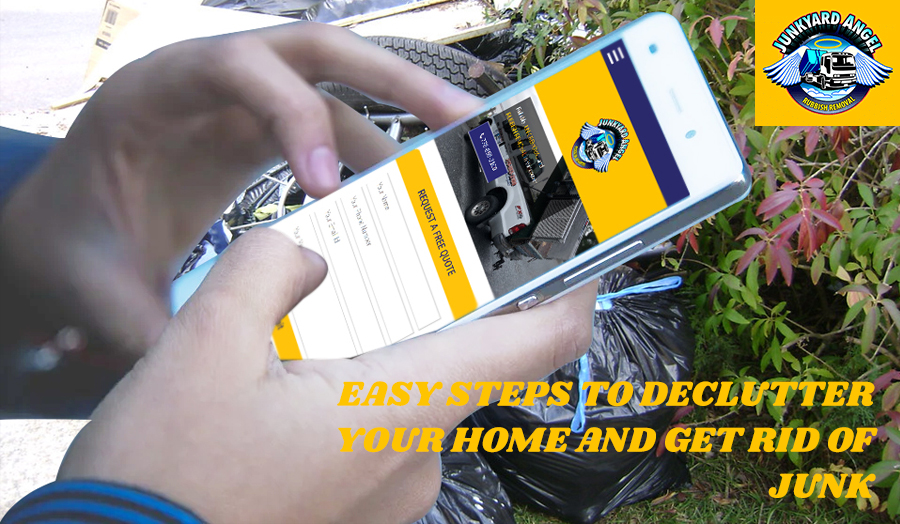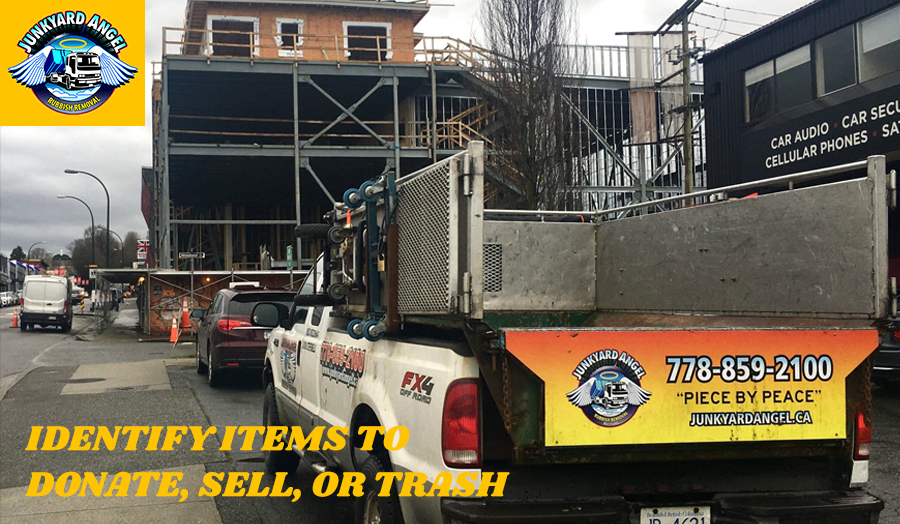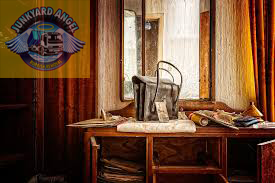
If you think that your home is overflowing with unwanted stuff, then you may not be the only homeowner to think so.
Clutter is a common problem that affects many people. It can really give a messy look to the home and make it disorganized. Plus, unwanted junk lying around the house can make it difficult to find things you need.
And on top of this, you would be surprised to know that such clutter can even be a source of stress and anxiety.
Yes, you read it right!
So, before the stress gets to you, eliminate the cause of the stress. Declutter your home soon by discarding the junk. Make sure to get rid of the unwanted stuff spread across all corners of your home.
Taking the first step in any new task is often hard. The same goes for starting with the decluttering process.
However, we make sure that decluttering your home doesn’t have to be a daunting task. Check out these 10 simple steps to effectively declutter your home. Doing so will help you say goodbye to junk once and for all.
Step 1: Commence with a plan
Even the noblest intentions of decluttering the house of junk can go haywire if there is no planning done before the execution. Take some time to look around the house. Assess the areas that need to be decluttered first. This step will help you come up with a timeline for completing the task.
Identify the areas that need decluttering: Take a walk around your home and identify the areas that have accumulated clutter. Such areas can span closets, drawers, cabinets, bookshelves, and other storage spaces.
Prioritize the areas: Once you’ve identified the areas that need decluttering, prioritize them based on the level of clutter and your personal preferences. You might choose to start with the area that’s causing you the most stress. Other homeowners might want to go for an area that is the easiest to tackle first. Before you begin decluttering, gather the supplies you’ll need. They may include garbage bags, boxes for donations, and cleaning supplies.
Enlist help: Decluttering can be overwhelming, so consider enlisting the help of a friend or family member. If you need professional help, then experts like Junkyard Angel are just one call away. We will dispatch our team to ensure end-to-end junk removal services that come with zero hassles.
Step 2: Get rid of duplicates
We get it that eliminating duplicates can be difficult. However, decluttering calls for some harsh steps and this step of de-duplication is one of them. Keep only those items that you really need and use, and let go of the rest.
Identify duplicates: Start by identifying items that you have duplicates of, such as kitchen utensils, clothing, or shoes. Look for items that serve the same purpose and are taking up unnecessary space.
Decide what to keep: Determine which items you use regularly and which ones you don’t. Keep the items that you use frequently and get rid of the ones that you don’t need.
Choose a method of disposal: You can donate them to a local charity, sell them online or in a garage sale, or give them away to family or friends. If you want to remove junk from your property, then do it the right way with Junkyard Angel.
Consider future purchases: Think twice before buying something in the future and ask yourself if you really need it. Who knows? Maybe you already have something that serves the same purpose. This will also help in decluttering the space.
Step 3: Identify items to donate, sell, or trash

Another important step in decluttering your home is to identify items that you can donate, sell or throw away. Some notable examples include old clothes, books, and toys. You can donate them to a charity or sell them online. Broken items or things that cannot be repaired should be thrown away.
Step 4: Start small
Decluttering your entire home can be overwhelming. But don’t look at this as a project to be done from start to end in one go. It is ideal to start small. You can begin with a single drawer or closet and work your way up from there.
You will note that this step will provide a sense of accomplishment as you continue progressing further.
You need not consider it a one-time job. You can take one weekend for each room and break up the bigger project into smaller phases.
Step 5: Have a designated sorting area
When decluttering, it’s important to have a designated sorting area.
Identify the area: This can be a table or an empty corner of a room that need not be used for any other purpose during the decluttering process.
Organize it as per disposal need: In this corner, you can sort items into piles of keep, donate, sell, or trash.
Do it: Now that you know how different items need to be disposed of, all that remains is to call up the organization and get it done.
Step 6: Organize your space
Once you have decluttered your space, it’s important to organize it.
Know what needs to go where: After the decluttering exercise, you will have more space for the remaining useful stuff. So, make proper use of it.
Organize it well: You can add stickers and labels to containers and arrange items in a particular order.
Use storage solutions. For example, you can use shoe organizers or baskets to keep items organized and easy to find.
Step 7: Keep items in their designated space
You should keep items in their designated space. Doing so will help avoid clutter at home. After all, it is no joy to see shoes in the living room or clothes strewn about on the bed.
Have a place for everything: Make sure every item in your home has a designated place to live. Doing so can help avoid the accumulation of clutter on surfaces such as countertops or tables.
Clean up as you go: Make a habit of cleaning up after yourself as you go about your day. For example, you can put away dishes immediately after using them. Another instance would be to hang up clothes or store them in the wardrobe instead of leaving them on the floor.
Involve everyone in the household: Make sure everyone in your household knows where things belong and encourage them to put things away in their designated spots.
Step 8: Have a system for managing incoming items
Now that you have successfully decluttered the space, it’s time to think ahead. You need to prevent clutter from building up again. It is vital to have a system for managing incoming items.
Have a designated spot for incoming items: Designate a specific spot in your home for incoming items, such as a table or basket near the front door. This will help you keep track of what’s coming into your home and prevent clutter from spreading throughout your space.
Sort items as they come in: Sort incoming items into categories, such as mail, packages, or groceries. This will make it easier to put them away and reduce the risk of items piling up.
Deal with items immediately: Don’t let items sit in the incoming spot for too long. Deal with them immediately, whether that means putting them away in their designated spot, throwing them away, or taking them to a donation center.
Be mindful of what you bring into your home: Finally, be mindful of what you bring into your home in the first place. Ask yourself if you really need something.
Step 9: Limit sentimental items
Sentimental items can be difficult to part with. But unfortunately, they can also contribute to clutter. Limiting sentimental items can help to keep your home organized and clutter-free. For example, you can limit yourself to a certain number of sentimental items per room.
Step 10: Celebrate your progress
Yay! You have now officially decluttered your home! This calls for celebrations. Interestingly, this is also the phase where you take the time to appreciate the quantum of effort put in by you.
Celebrating this project as an achievement is crucial. It will help you remain motivated to continue your efforts in maintaining a clutter-free house in the long run.
To sum it up
Getting rid of excess junk is vital in decluttering your home. But it is vital to have a dedicated approach to ensure better success in this endeavour. Try to apply these 10 steps, and you will be better equipped to tackle the decluttering process and achieve a more organized and clutter-free home.
If you need professional assistance, then Junkyard Angel is at your service. Call us, and we will ensure timely and effective junk removal in Vancouver. So, connect with us today and get the space your home deserves!


